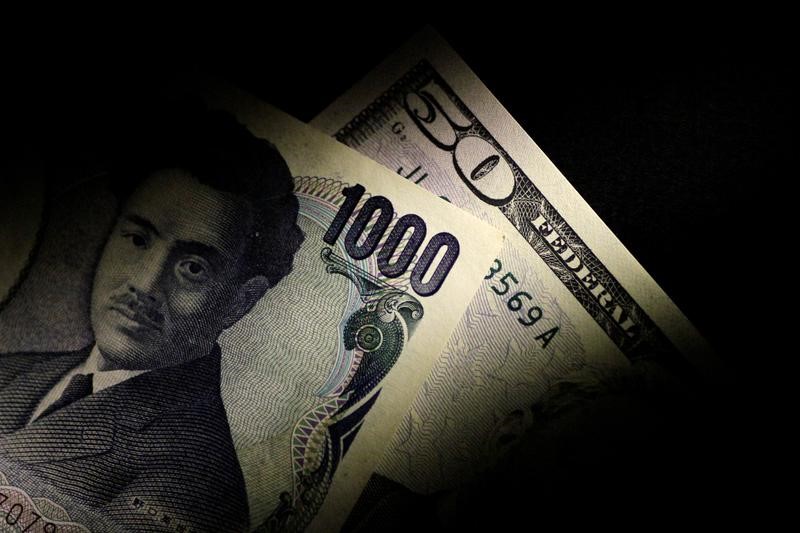Investing.com – The yen has struggled to sustain any gains against the US dollar even after last week’s official intervention, but UBS still sees potential for the pair to decline in the medium term.
At 10:30 ET (14:30 GMT), USD/JPY was trading 0.1% higher at ¥155.64, just below last week’s ¥160 level – the yen’s weakest level against the dollar in 34 years .
The weakness comes despite Japanese authorities spending an estimated $60 billion last week to support their currency.
In addition, the Bank of Japan issued its strongest warning yet on Wednesday, with Governor Kazuo Ueda stating that it could take monetary policy action if the yen’s decline significantly affects prices.
UBS examined the period 2006-2007, when the yen was also under pressure due to high US interest rates and carry trading in full swing.
The Swiss bank noted that as US yields reached very attractive levels (e.g. >5%) compared to low Japanese yields, global carry trades continued to push USD/JPY higher even as the Fed left policy rates unchanged .
Furthermore, when the Bank of Japan finally started raising rates (by 25 basis points each in July 2006 and February 2007), this led to a decline in the USD/JPY, but failed to counteract the forces of global yield carry trade.
Finally, the peg peaked in June 2007, three months before the first Fed rate cut in September 2007. This is because markets tend to move forward once US data starts to weaken.
This suggests that as long as US data remains strong, dampening expectations for Fed rate cuts, there will be upward pressure on the USD/JPY. That said, we also think it will become more difficult for markets to push the peg higher now that the exchange rate has reached painful limits for Japanese officials.
Remove ads
.
Furthermore, the level of net short JPY is testing record levels last seen in 2007, which also coincided with a spike in USD/JPY.
“In this context, we maintain our view of a decline in USD/JPY over the medium term,” the bank said. “We expect the Fed to cut rates from September, and the BoJ to raise rates in July or October, with further tightening likely in 2025. A narrowing of the yield spread should put downward pressure on the combination, in line with what happened. in 2007.”
The bank expects USD/JPY to fall to ¥148 by the end of the year, and says a rise to ¥160 should again attract potential currency intervention.
That said, if strong US data forces the Federal Reserve to raise rates this year, USD/JPY will likely rise above 160.


